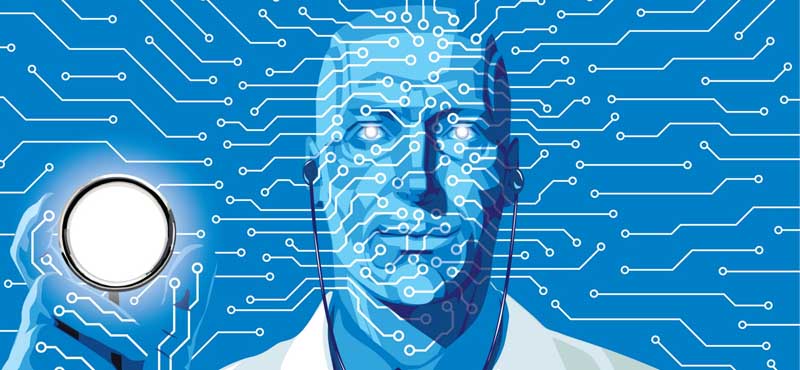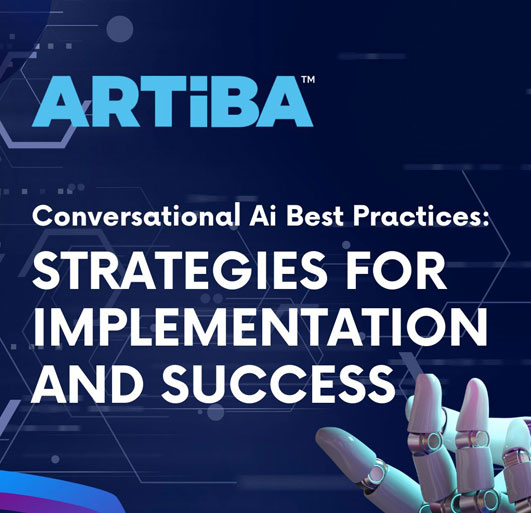New AI Applications in Mental Healthcare

As per a PwC report, the world shall see an exponential rise in artificial intelligence applications (AI), contributing as much as USD 15.7 trillion to the global economy by 2030. Within this, the growth coming from AI in the healthcare sector is expected to reach USD 6.6 billion by 2021 (Frost and Sullivan), with a compounded growth annual rate of 40%.
Mental health is a massive area of study that needs urgent attention by technical and medical professionals since the number of patients suffering is at an all-time high.
This article will discuss new AI applications in supporting treatment for the three prevalent mental health problems: Autism, depression, and anxiety, and elaborate on the role AI engineers can play in making these treatments possible.
1. AI Applications for Autistic patient’s care
In 2020, the CDC (Centers for Disease Control and Prevention) reported that 1 in every 54 children in the US has Autism. Unfortunately, most of these children often go undetected (much less getting treated) for a significant part of their lifetimes, thereby unconsciously losing on many opportunities in their childhood and facing their consequences in adulthood.
Current applicability of AI in Autism
New developments for applying AI for diagnosis and treatment of ASD (Autistic Spectrum Disorder) are already underway. One of the popular applications of AI in ASD is the development of a screening test, which comprises:
-
A mobile application that offers a user interface for collecting questionnaire data.
-
An intelligent web service for detecting ASD that uses CNN (Convolutional Neural Network) and historical data.
-
A database that helps CNN to understand new information.
These new diagnostic tools have made few good additions in the field of Autism. It uses a large autism dataset for the classification of CNN, which consists of toddlers, children, adolescents, and adults. This CNN-based classification has shown higher sensitivity, accuracy, and specificity in comparison to other screening approaches. Thus, it has immensely benefitted busy physicians and changed the way diagnosis are made for autism.
A proposed method for Autistic patients’ care
Objective: To provide Autistic patients with an AI-developed ear-plugin system that can guide them about their social behavior and help them understand the behavior of the person in front. This device will be developed by applying AI technology.
Method: Three below given AI appliances are connected to each other and the patients' mobile software:
-
A smartwatch to monitor the body temperature, blood pressure, and pulse rate of the person.
-
A special spectacle to record the video of the person(s)along with their voice (tone, pitch) and other sound effects. It will also record the body language and facial expressions of the person speaking to the patient.
-
An ear plugin to guide the patient on her behavior. Preferably the guidance will focus on developing self-reasoning in the long run so that the person isn’t dependent on these smart devices after some time and herself turns smarter.
How it works? The data of the patient and her interactions will be stored in a mobile software, which shall be taught to convey messages through ear plugin.
-
Leave or stay - If unfavorable situation is noted (say loud noises around) and disturbances as seen in the pulse rate, and voice variation, the software through the ear plugin can direct the patient to leave.
-
Silent or speak - In speaking or responding to the software using ear, the plugin can give direction to the patient on how to react, what to speak, choice of words, pitch to be used, tone choice, and much more. Also, it can recommend the best body language principles that can be applied during communication.
Results : The above AI-based device will help autistic patient correctly understand the intentions (either positive or negative) of the person in front and become better at reading social cues.
2. Applications of AI for Depression
Depression has tripled in the USA adults because of COVID-19 stressors like lockdown. It has been reported by the researchers of Boston University that 27.8% of adults were diagnosed with depression symptoms as compared to 8.5% before the pandemic. Depression is a very painful illness and is widespread today globally. Clinical depression, thus, demands immediate attention especially for treatment.
Current applicability of AI in Depression
New developments for applying AI for diagnosis and treatment of depression are in progress. An example of a well-known AI-based application that helps depressed patients is WoeBot. It is important to note here that this application, though cannot diagnose or treat depression, it can act as a complementary device for patients working with a psychiatrist.
WoeBot was launched in 2017 and is called an automated conversational system, also named a chatbot. It provides good care to depressed patients by mimicking conversation like a human, providing self-help and guidance and companionship.
WoeBot can provide them with resources and information, such as exercises and videos, based on what it thinks you require at that time. You can benefit from WoeBot even anonymously. In addition to this, you can chat with it using Facebook Messenger.
As you begin to chat regularly with WoeBot, it keeps collecting data through natural language processing (NLP) and applies this knowledge to understand you.
A proposed method for treatment of depression
Objective: To provide the depressed patient with an AI-based ear plugin device that can play the right audio automatically for guidance (verbally). These spoken words can be from the friends and family members, which have been found helpful at the hour of experiencing depression.
Method: The device can be developed after understanding the benefits of Talk therapy in depressed state. All the three below given AI appliances are connected to each other and the patients' mobile software:
-
A smartwatch to help monitor the blood pressure, body temperature, and pulse rate of the patient. A record will be kept of this data collected.
-
A special spectacle to record the patient's video along with her voice (tone, pitch) and other sounds.
-
An ear plugin to play positive affirmations good thoughts or positive interactions of parents and friends.
Result: Achieving instant counselling benefits from the ear plugin system. Also, helpful in preventing suicide by making the patient feel good.
3. Applications of AI for Anxiety
In the United States, more than 20 million college students have a mental illness. Approximately 50% of college students have reported that they are experiencing anxiety and depression symptoms that have affected their daily working within the last year. Though there is a clear need for visiting a psychiatrist, 75% of students do not access mental health professionals.
Current applicability of AI in Anxiety
New developments for applying AI for anxiety diagnosis and treatment are in progress. One such is to provide access to the efficacy and feasibility of applying an integrative psychological AI to decrease self-identified anxiety symptoms in college students of the USA. Students in need of mental health treatment face several issues, including location, cost, stigma, and availability. Research has proved that computer-assisted therapy and chatbot that provides cognitive-behavioral therapy (CBT) and offers less-expensive and less-intensive approaches for treating anxiety.
A proposed method for Anxiety treatment
Objective : To provide the people suffering from anxiety with a motivational song or lecture. It shall be done with a device that can check the anxiety levels by continuously monitoring the person's pulse rate and blood pressure in need. Thus, playing the right music at a stressful time.
Method : All the three below given AI appliances are connected to each other and the patients' mobile software:
-
A smartwatch to help monitor the blood pressure, body temperature, and pulse rate of the patient. A record should be kept of this data collected.
-
A special spectacle to record the patient's video along with her voice (tone, pitch) and other sounds around.
-
An ear plugin to play patient’s favorite motivational songs, mindfulness lessons, positive affirmations, parents or friends' good thoughts or positive interactions.
Results : The above ear plugin system will help divert the patients’ mind to the more promising and pleasant experiences in her life.
A brief note on helping with Autism/Depression/Anxiety treatment
This is not a medically approved treatment method. It is just a proposal to deal with a bad mood or some symptoms of depression/anxiety/autism. It is to help and support the patient in her medical treatment. It is thus just a supportive method and has not been medically tested. Nevertheless, due to its design, it can be tried to better the quality of life while being treated.
The mobile software is connected to the ear plugins and wristwatch. On one hand, the software gives freedom to the patient to choose from various helpful options (mentioned below); on the other hand, the software records the change in pulse rate, blood pressure, etc., as the choice (from the software options) is being made and played. This information is added continuously to the big data, which helps mobile software perform even better.
The major available options for meaningful engagements for the patient:
1. Playing Music/Song - The patient can select her favorite music or motivational songs.
2. Talk therapy - The patient can check the Online (or Available) status of friends (volunteering), or parents, or counsellor. This can be achieved by using already existent applications like WhatsApp.
3. Mindfulness meditation – Mindfulness improves the patient’s ability to live in the present moment and thus stay grounded. The patient can gather strength to leave an unwanted situation. This can be achieved by mindfully being present and understanding the difficulty in a situation or place, thereby taking prompt action. Thus, the patient can feel grounded and present in the situation and ability to take the decision. The software can also recommend this by noting down the pulse rate and other details and relating them to the current location.
4. Breathing exercise - The patient can be recommended breathing exercises - from 10 seconds to 15 minutes. Sometimes it is not possible to do deep breathing due to the situation or lack of motivation. In such a case, the patient can even choose a deep breathing session of just 10 seconds as the minimum, to begin with. Deep breathing increases with O2 levels in the brain and helps in relaxation.
5. Videos - The favorite or funny videos can be played in a stressful and emotional state. The jokes can be on the topic of interest of the patient. Thus, also helping out by applying laughter therapy.
6. Increase in Productivity level - These calculations based on structured and unstructured data of achievements, actions taken, work done makes the person feel good about herself. The feedback from the patient and physician can help confirm productivity increase. Thus, productivity increase is both the cause and effect.
7. Reminding of achievements in the past - Reminding the person of the medal or competitions won in the past—the event's photographs when she received the medal. By showcasing past achievements, it will help you remember the tasks achieved with ability and hard work.
8. Good deeds done - Helping remember the good work done daily or weekly or monthly or yearly.
9. Yoga – This option can help in depression, anxiety and even autism.
In all above cases, the more the data you collect, the better will be accuracy of the AI-systems to help in patient's decision-making. It necessitates numerous iterations and training of datasets to be done by AI engineers.
Role of AI Engineers in Bettering Mental Healthcare
For integrating AI technologies with mental healthcare for autism, depression and anxiety, there is a dire need for AI professionals with an in-depth technical and at least a basic medical know-how. Prospective AI engineers seeking to work in healthcare should be versed with programming languages, statistics, calculus, linear algebra, algorithms and applied Mathematics, signal processing techniques, and neural network architectures. Medical knowledge involves an understanding of the psychological and physiological factors in each of the problem to best ideate and develop the needed AI models.
A blend of these skills meets high remuneration in the global market today. The average salary of an AI engineer is USD 114,121 per annum according to Glassdoor data, with a minimum of USD 78,000 annum and going as high as USD 150,000 per annum. This number is even higher for AI engineers working in the medical field.
For good reason, AI engineers are in high demand. Artificial intelligence has an almost endless capability to simplify and improve tasks which are commonly performed by humans. AI engineers can create strong or weak AIs, depending on the objectives to be achieved. To efficiently develop, AI-based devices in healthcare industry, engineers will need a knowledge of:
-
Using AI for image processing,
-
Deploying NLP for speech recognition,
-
Building models with deep learning neural networks, and
-
Varied machine learning algorithms to curate insights.
To be a part of this success story as an AI Engineer, begin by perfecting the programming languages and keep the pulse of everything latest on AI in healthcare. Some of the best programming languages to pursue are Python, R, Java, Scala, SQL, and Prolog. It will be instrumental in designing an all-encompassing software for the AI-based devices. The more thorough and complete the software design, the better your overall system will be for autism, depression, or anxiety.
On the ending note...
AI-based mental health technology provides huge scopes for scalable personalized therapy as the demand for convenient, affordable, secure, and lasting mental support rises. This is a lucrative opportunity for AI engineers to carve out a career in the niche, and enjoy a better and more promising future.






